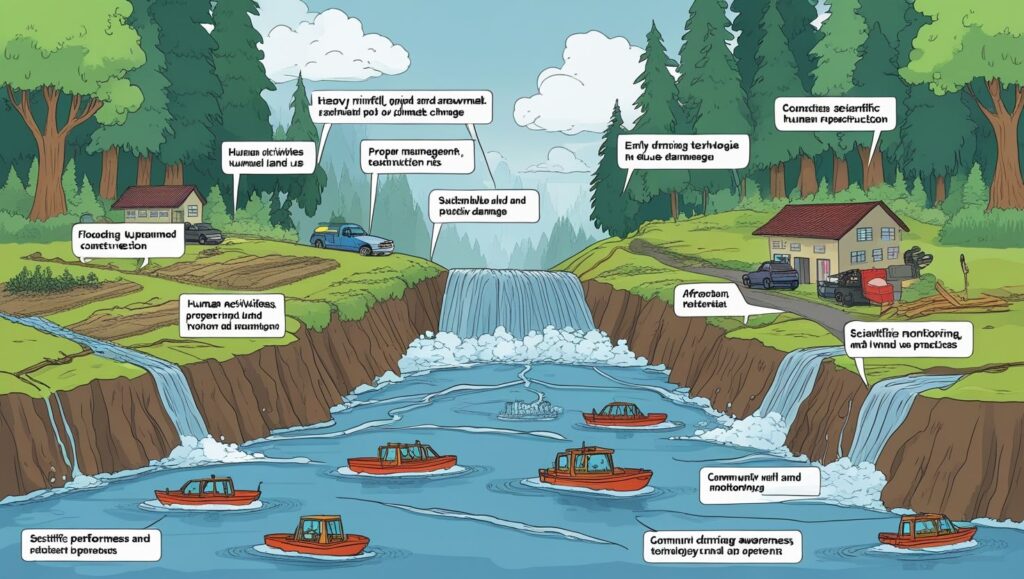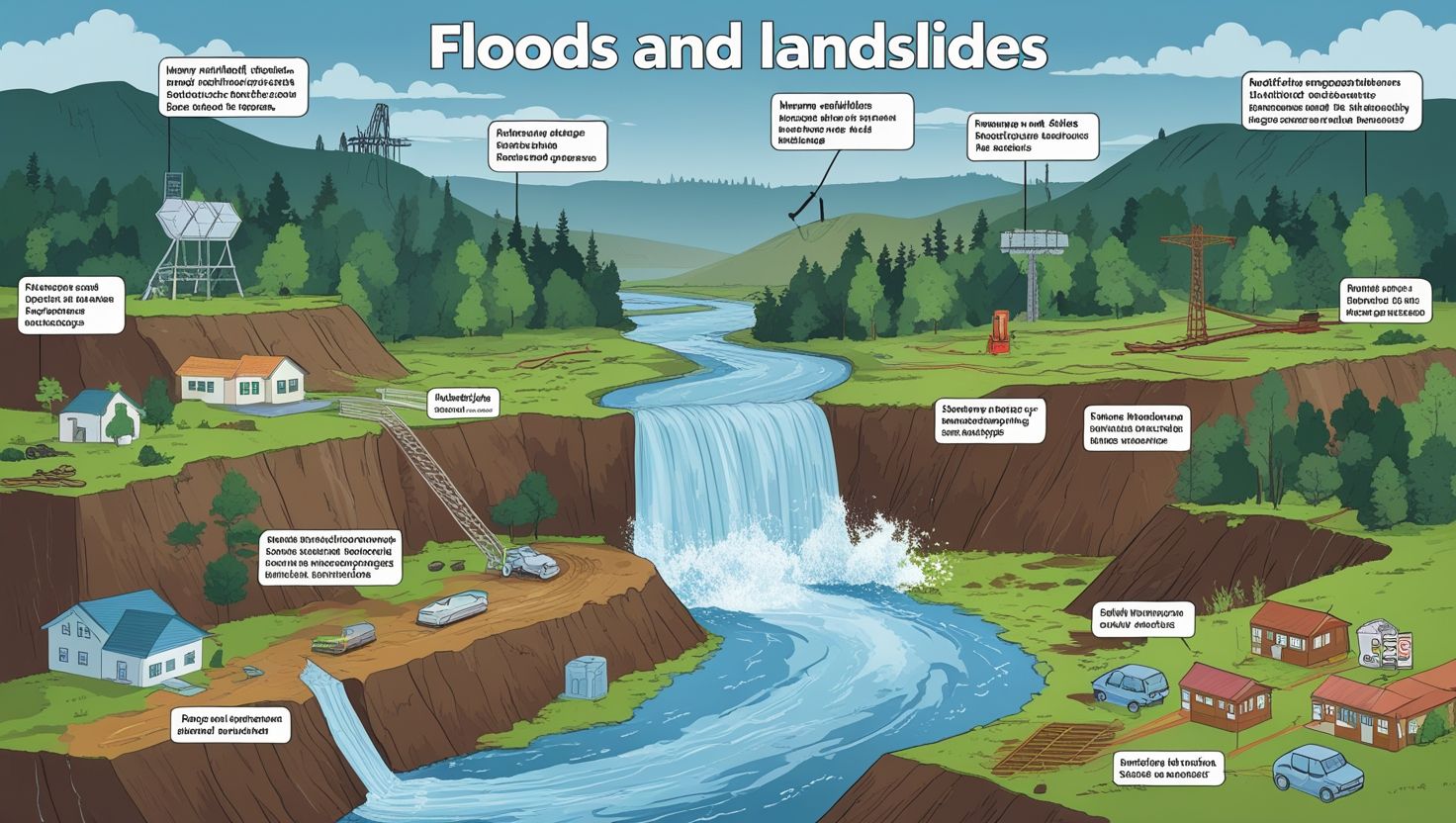Introduction
Scientific Reasons and Remedies for Floods and Landslides, Floods and landslides are natural disasters that cause widespread destruction. They result from a combination of climatic, geological, and human factors. Understanding their scientific causes helps in developing effective remedies. Floods occur when water overflows onto dry land, while landslides involve the downward movement of soil and rock. Both disasters displace communities, damage infrastructure, and disrupt ecosystems. Transitional words like therefore, however, furthermore, and consequently help clarify the connections between causes and solutions. This article explores the scientific reasons behind floods and landslides, followed by practical remedies.
Scientific Reasons for Floods
Floods primarily occur due to excessive rainfall, rapid snowmelt, or dam failures. Heavy precipitation overwhelms drainage systems, leading to overflowing rivers. Additionally, climate change has intensified rainfall patterns, increasing flood risks. Furthermore, deforestation reduces soil’s water absorption capacity, worsening runoff. Urbanization also plays a role since concrete surfaces prevent water infiltration. Consequently, water accumulates quickly, causing flash floods. Coastal areas face flooding from storm surges and rising sea levels. Transitional words like similarly, moreover, and as a result highlight these interconnected factors.

Scientific Reasons for Landslides
Landslides are triggered by soil instability, heavy rainfall, earthquakes, and human activities. Steep slopes are particularly vulnerable because gravity pulls loose soil downward. Prolonged rain saturates the ground, reducing friction between soil particles. Consequently, the land becomes unstable and slides. Deforestation weakens soil structure since tree roots no longer hold the earth together. Moreover, construction and mining disturb natural land formations, increasing landslide risks. Earthquakes further destabilize slopes by shaking the ground. Words like thus, nevertheless, and in addition emphasize these cause-effect relationships.
Remedies for Floods
Effective flood control requires both structural and non-structural measures. Building dams and levees helps regulate water flow. Additionally, restoring wetlands improves natural water absorption. Urban planners should implement permeable pavements to reduce runoff. Furthermore, reforestation prevents soil erosion and enhances groundwater recharge. Early warning systems and community awareness programs are also crucial. Governments must enforce zoning laws to restrict construction in flood-prone areas. Transitional words like for instance, accordingly, and in contrast help organize these solutions logically.
Remedies for Landslides
Preventing landslides involves slope stabilization and proper land use. Retaining walls and terracing can reinforce unstable hillsides. Moreover, afforestation strengthens soil with deep-rooted vegetation. Drainage systems should be installed to divert excess water. Avoiding construction on steep slopes minimizes human-induced risks. Geotechnical surveys must assess land stability before development. Public education on landslide hazards ensures preparedness. Words like similarly, consequently, and as a result improve the flow of these recommendations.
Conclusion
Floods and landslides are complex disasters with interconnected causes. Scientific understanding helps in developing sustainable solutions. Effective remedies include engineering projects, ecological restoration, and policy changes. Transitional words enhance clarity, making the discussion coherent. By combining science and proactive measures, societies can reduce the impact of these disasters.

Hi! Someone in my Facebook group shared this site with us so I came to take a look. I’m definitely loving the information. I’m bookmarking and will be tweeting this to my followers! Outstanding blog and amazing design.
293h61
grdzcv
I think this is among thee most significant information for me.
And i amm glad reading your article. But sshould remark on few general things,
Thhe web site style iss ideal, the articles is really
great : D. Good job, cheers https://HOT-Fruits-Glassi.Blogspot.com/2025/08/hot-fruitsslot.html
Hey very nice web site!! Man .. Beautiful .. Amazing .. I will bookmark your web site and take the feeds also…I am happy to find a lot of useful information here in the post, we need develop more strategies in this regard, thanks for sharing. . . . . .
It is in reality a nice and helpful piece of info. I’m happy that you simply shared this helpful information with us. Please stay us up to date like this. Thank you for sharing.